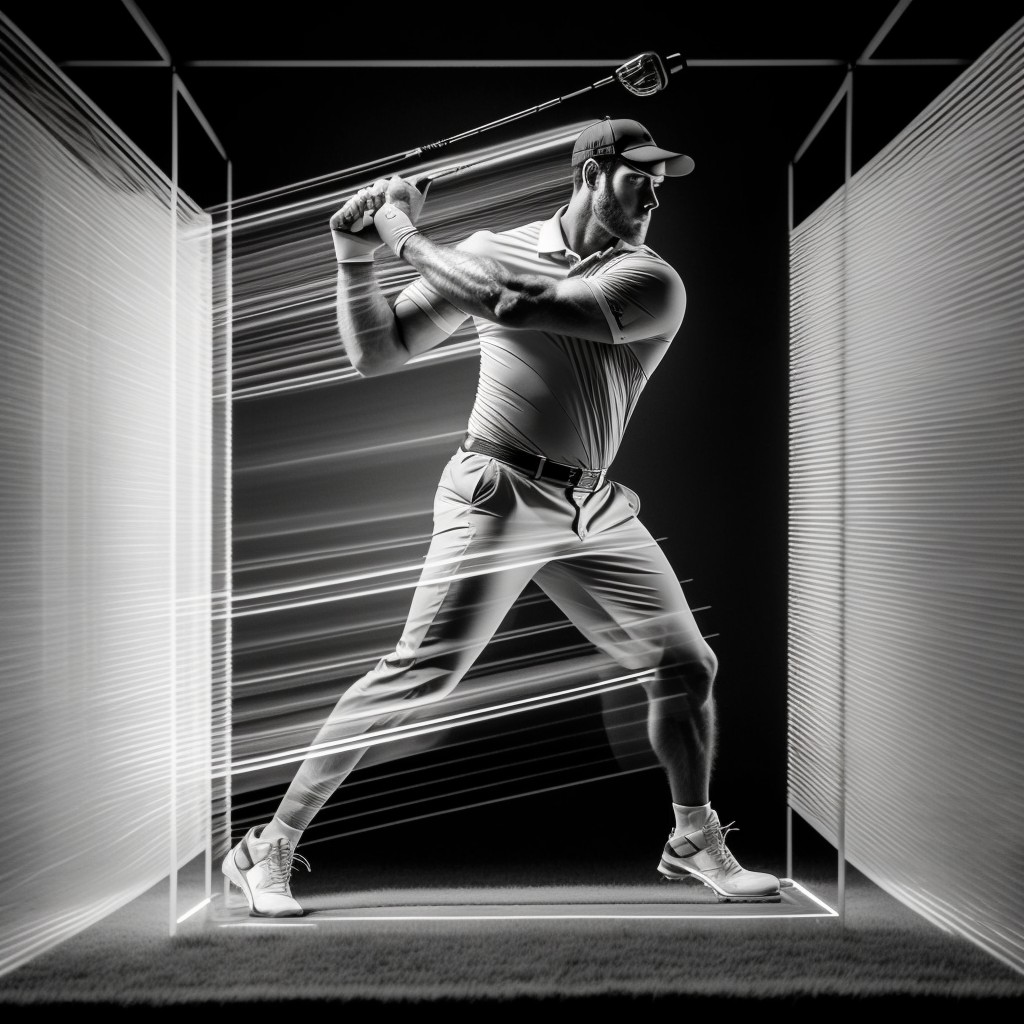
If you’re reading this, it likely means you’ve caught the golf bug just like I did when I first picked up a club. Golf can be an incredibly rewarding sport. It’s more than just swinging a club and watching a tiny white ball disappear into the distance. It’s a game of skill, precision, and strategy. I wrote Golf Ball Distances for Beginners to help you begin your golf journey.
When I started playing golf, I was perplexed by a myriad of questions, but one that topped the list was, “How far should a beginner hit a golf ball?” It’s a simple question, but the answer isn’t quite as straightforward. There are quite a few variables that go into it, from the club you’re swinging to the ball you’re hitting, and even your physical strength. But don’t worry, we’re going to break it all down in this guide.
Do you remember your first time on a golf course? I certainly do. As I stood there on the tee, I was surrounded by experienced players who made it look so easy. I recall holding my 7-iron, palms sweaty, heart pounding. So then, I took a deep breath, swung, and watched as my ball trickled embarrassingly short of where I had imagined it would land. It was a humbling experience, but it also sparked a determination in me to understand the game better, especially the art of hitting a golf ball with distance and accuracy.
Understanding the average distances you should be hitting as a beginner golfer is crucial to progress. It gives you a benchmark to measure your improvement, helps you choose the right clubs, and informs your strategy on the course. That’s why I’ve put this guide together. I want to help you navigate the beautiful game of golf, just like others helped me when I was a beginner golfer.
In the sections that follow, we’ll explore the basics of golf, from the composition of golf balls to the types of clubs. We’ll delve into how far a beginner should ideally hit a golf ball, and discuss factors that can influence the distance your ball travels. Finally, I’ll share tips and strategies to help you improve your distance over time. So, grab your clubs, and let’s get started on this journey together.

Understanding Golf Basics
To fully appreciate how far a beginner should hit a golf ball, we first need to unravel some of the fundamental aspects of golf – the golf ball and the golf club.
The Golf Ball
I still remember the first time I held a golf ball. I was amazed at how those tiny dimples, that appeared to be mere aesthetic additions, played such a significant role in the flight and distance of the ball. The composition and type of the ball you choose can greatly influence the distance it covers.
Golf balls are usually made up of layers, with a rubbery core and a hard outer shell. These layers work together to generate distance, spin, and control. The type of golf ball you choose – whether it’s a two-piece distance ball, a softer multi-layer ball for spin and control, or a premium golf ball – can impact how far you hit. Each ball has its strengths, and choosing the right one for your level of play can be a game-changer. Believe me, I’ve tried my fair share of balls over the years, and I’ve seen the difference first hand.
The Golf Club
Now let’s talk about the tools of the trade – golf clubs. The first time I walked into a golf store, I was surprised at the variety of clubs available. If you’re anything like me, the array of woods, irons, wedges, and putters can be a bit daunting initially.
Each type of club is designed with a specific purpose and to cover a particular distance. Woods, or drivers, are for when you want to hit long and cover maximum distance. Irons help you with a wide range of shots, from long to short distances. Wedges offer high loft for precision shots, while putters are for those final, crucial short strokes.
The type of club you use dramatically influences how far you’ll hit the ball. It’s essential to understand what each club is designed to do and how to use it effectively.
We’ve covered some basic groundwork here, but remember, understanding the golf ball and clubs is just the starting point. To answer the question, “How far should a beginner hit a golf ball?” we need to delve deeper, and that’s exactly what we’ll do in the next section. Stay tuned!
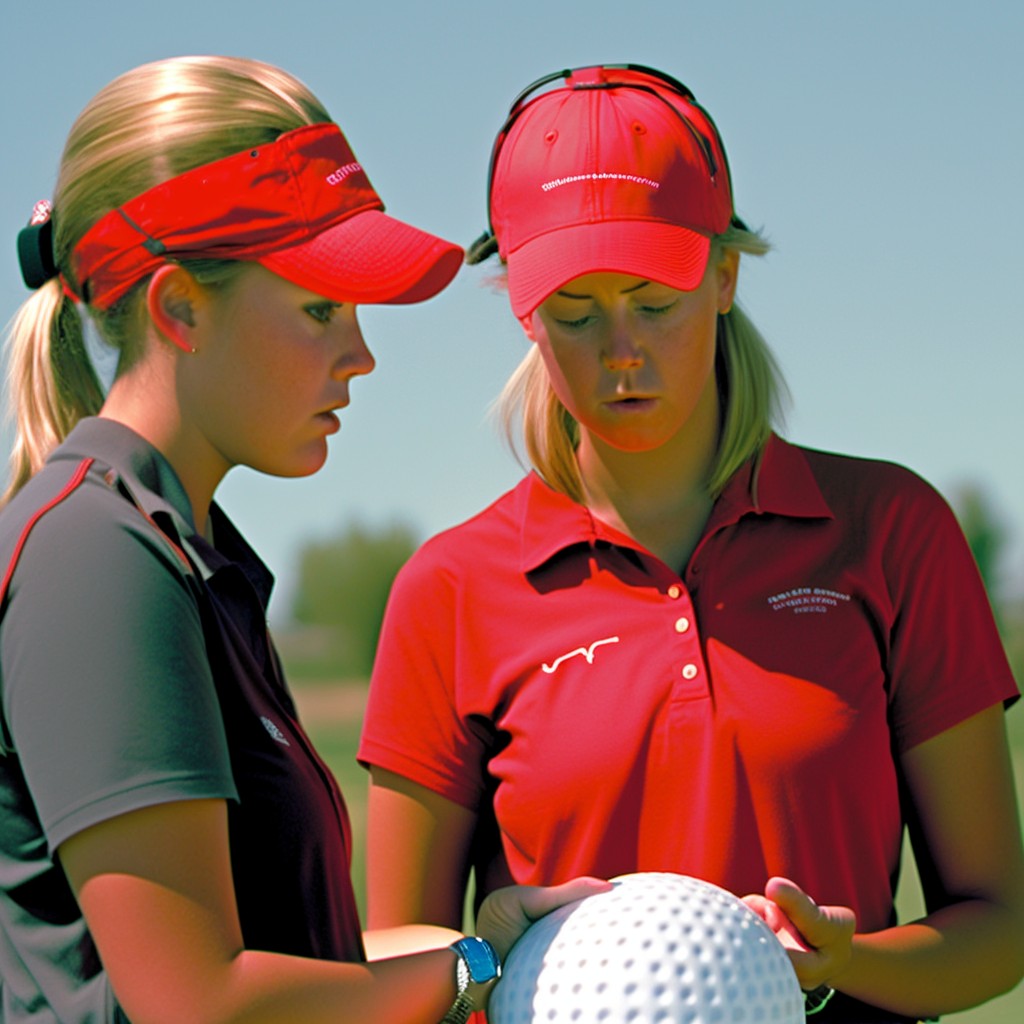
Distance Basics: How Far Should a Beginner Hit a Golf Ball?
When I first started playing golf, one of the biggest mysteries to me was the range of distances people were hitting. You might be asking the same question: “How far should I be hitting the ball as a beginner?” It’s a common question and a good one too. After all, golf is as much about distance as it is about precision.
Basic Distance Guidelines for Different Golf Clubs
Generally, different golf clubs are designed for different distances. A driver, for instance, is built to give you the maximum distance, typically between 200-240 yards for beginners. Irons, on the other hand, offer a range of distances. A 9-iron might take you about 100-125 yards, whereas a 5-iron might carry your ball around 150-180 yards.
These are just general guidelines, of course. I remember being so excited when I first hit my driver over 200 yards, and then equally humbled when my next shot barely made it past the ladies’ tees. Don’t worry too much about these numbers initially – they’re more of a ballpark estimate to give you an idea of what each club can do.
How Swing Technique Influences Distance
The distance your golf ball travels isn’t just about the club you use. It’s also about how you swing it. Trust me, I learned this the hard way. When I first started, I thought the harder I hit, the further the ball would go. The result? A lot of frustration and some truly wild shots.
Golf is about technique more than brute force. A smooth, controlled swing can often send the ball further than a more powerful but less controlled swing. It took me some time to get the hang of this, but once I did, it made a big difference.
Average Distances for Beginner Golfers
If you’re just starting out, you might be wondering what the average distances are for a beginner golfer. While there is a lot of variation, as a rough guideline, beginners often drive the ball 200 yards or so with a driver, 150 yards with a 5-iron, and 100 yards with a 9-iron. But remember, everyone’s different. When I started, I was thrilled to hit the ball 150 yards with my driver!
That’s the basics of distance covered. But as with anything in golf, there’s always more to the story. Let’s now look at the various factors that influence how far a golf ball can travel. You might be surprised by some of them!
Check out this video: Meet The Greatest Driver of the Golf Ball Ever

Factors Influencing Golf Ball Distance
Understanding how far you should be hitting a golf ball as a beginner involves more than just club selection and swing technique. In my early days of golfing, I was surprised to learn just how many factors can influence the distance a golf ball travels. Let’s dive into some of these.
Physical Strength and Fitness Level
When we think of golf, we might not immediately associate it with physical strength. I certainly didn’t. I mean, how hard could it be to swing a club, right? As I quickly learned, quite hard. Physical strength, particularly in your upper body, can significantly impact how far you can hit a golf ball.
But remember, strength isn’t everything. I’ve seen plenty of strong folks who couldn’t hit the ball far because they didn’t have the right technique. So while strength can help, it’s not the be-all and end-all. And let’s not forget about fitness level. Being in good shape can help you maintain consistency throughout your game, which is key to hitting those longer shots consistently.
Quality of Golf Equipment
The quality of your golf equipment can also influence how far you can hit the ball. Early on in my golf journey, I bought a used set of clubs from a yard sale. They did the job, but once I upgraded to a better set, I noticed a significant improvement in my distance.
That doesn’t mean you need to run out and spend a fortune on top-of-the-line clubs. But investing in a decent set that suits your level of play can certainly help. The same goes for golf balls. Different balls perform differently, and finding the one that suits your play style can add some yards to your shots.
Weather Conditions and Terrain
Another thing that surprised me was the effect of weather conditions and terrain on golf ball distance. A windy day can drastically affect how far and even in which direction your ball travels. Playing in cold weather? The ball tends not to travel as far. And let’s not even talk about trying to hit a ball out of a bunker.
The terrain of the golf course also plays a part. I’ve had my fair share of mishaps with tricky slopes and bunkers, and let me tell you, it’s as much about strategy as it is about skill.
Understanding these factors can help you make better decisions on the course and ultimately increase your golf ball distance. But remember, Rome wasn’t built in a day. Improving your golf ball distance takes time and practice, which leads us to the next part of our guide: tips for improving your golf ball distance. Ready? Let’s dive in!
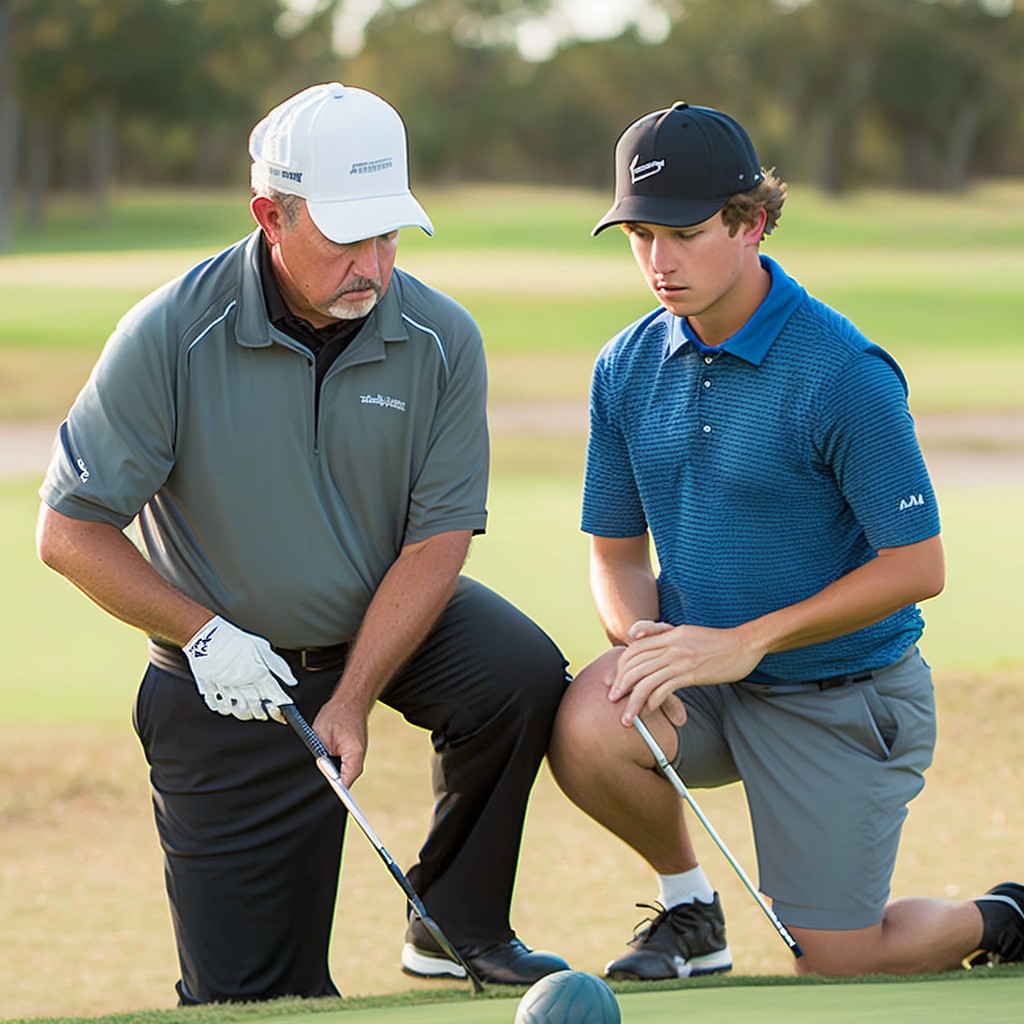
Improving Your Golf Ball Distance
Just like every golfer out there, I was eager to improve my golf ball distance when I first started. I wanted to see that ball fly far and straight, just like the pros. Over time, I’ve learned a few things that can help with that. Let’s discuss some of them.
Tips for Improving Swing Technique
Improving your swing technique can significantly impact your golf ball distance. Remember, golf is not about brute force but rather about technique. One of the first things that helped me was understanding the concept of a smooth, consistent swing. The goal is to swing your club on a consistent path, making solid contact with the ball.
Another tip that significantly improved my distance was learning to use my body to power the swing, not just my arms. By rotating my torso and shifting my weight during the swing, I was able to generate more power and, in turn, hit the ball further.
Importance of Choosing the Right Golf Equipment
Choosing the right equipment for your skill level and style of play can also make a big difference in your distance. When I first started, I used an old set of clubs, and while they were fine for learning, I noticed a significant improvement in distance when I switched to a set that was better suited to my swing.
The same goes for golf balls. Some balls are designed to maximize distance, while others offer better control. Experimenting with different balls helped me find the one that complimented my play style and helped improve my distance.
Strategies for Dealing with Different Weather Conditions and Terrains
Playing golf isn’t just about the perfect swing or the ideal club. It’s also about adapting to the environment. When I played my first round in strong winds, it was a disaster. But over time, I’ve learned to adjust my game based on the weather and the course conditions.
For instance, on windy days, it might be helpful to keep your shots lower to reduce the effect of the wind. On courses with lots of slopes and hills, strategizing your shots can save you some strokes and potentially increase your distance.
Improving your golf ball distance is a journey. There will be days when you feel like you’ve got it all figured out and other days when nothing seems to work. Trust me, I’ve been there. But with practice, patience, and a bit of strategy, you’ll see improvement over time. Let’s wrap things up in the next section. We’ve covered a lot, but there’s still a bit more to discuss.
Take a look at this video: Scottie Scheffler’s KEYS To WINNING
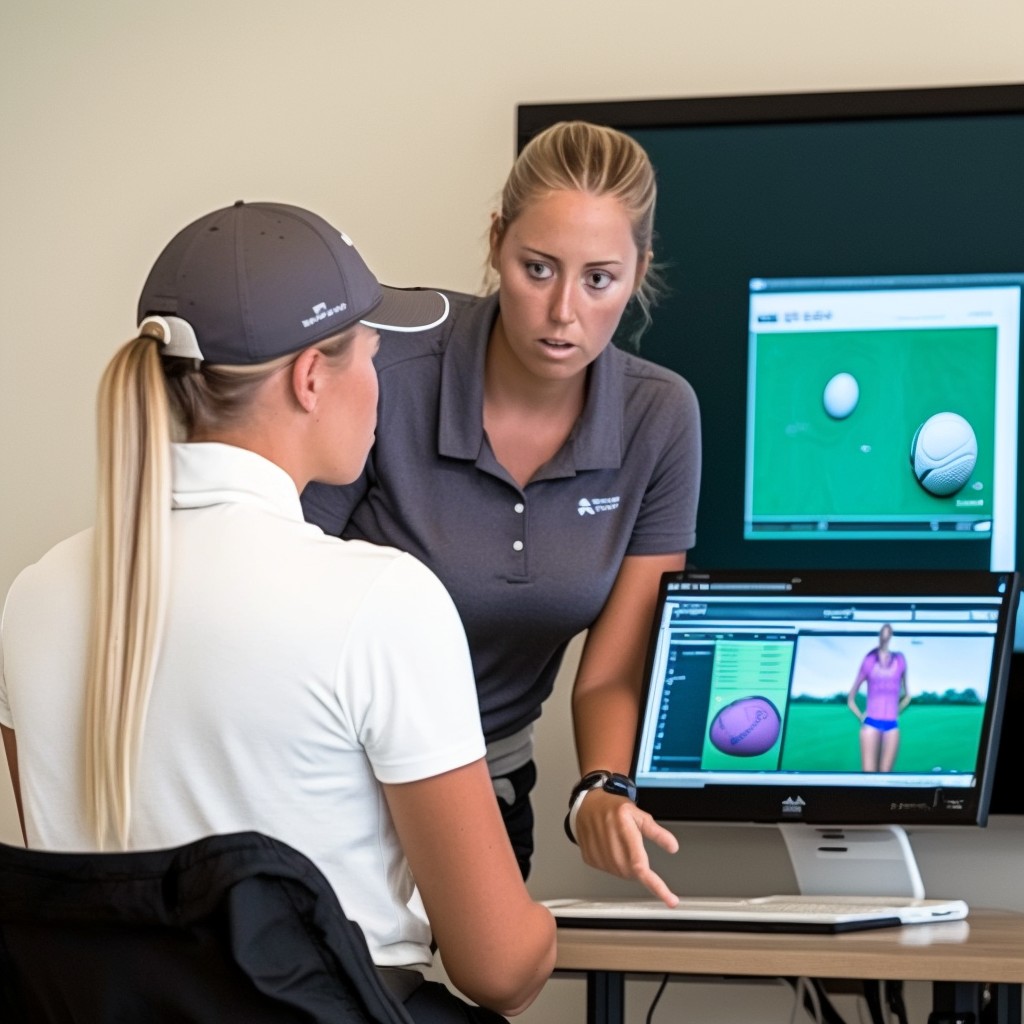
Conclusion: Embracing the Golf Journey
When I first started golfing, I thought it was all about how far you could hit the ball. But as I learned more about the game, I realized that golf is about much more than just distance. It’s a journey of self-improvement, strategy, and above all, enjoyment.
Managing Expectations
As a beginner, it’s important to manage your expectations when it comes to distance. Remember, those professionals you see on TV have been playing for years and have dedicated a significant part of their lives to the game. Don’t be too hard on yourself if you’re not hitting the ball as far as you’d like. Trust me, I’ve been there. The key is to focus on gradual improvement, not perfection.
Continuous Learning and Practice
Golf is a game of continuous learning. There’s always something new to learn, whether it’s a different type of shot, a new strategy, or even a new club to try. When I started, I was amazed at how much there was to know about this seemingly simple game.
And of course, practice is key. I’ll never forget the feeling of hitting my first 200-yard drive, but it took a lot of swings (and quite a few mishits) to get there. The more you play, the more you’ll improve, and the further you’ll hit the ball.
Enjoying the Game
Above all, remember to enjoy the game. Golf is meant to be fun, after all. I’ve had some of my best moments on the golf course, both alone and with friends. It’s not just about hitting the ball far, it’s about enjoying the process.
There you have it! We’ve covered everything from the basics of golf balls and clubs, to how far a beginner should hit a golf ball, to factors that can influence distance, and even some tips for improving your own distance. Remember, every golfer’s journey is unique. Embrace the process, celebrate your improvements, and most importantly, enjoy your time on the course. Here’s to many great rounds of golf ahead!
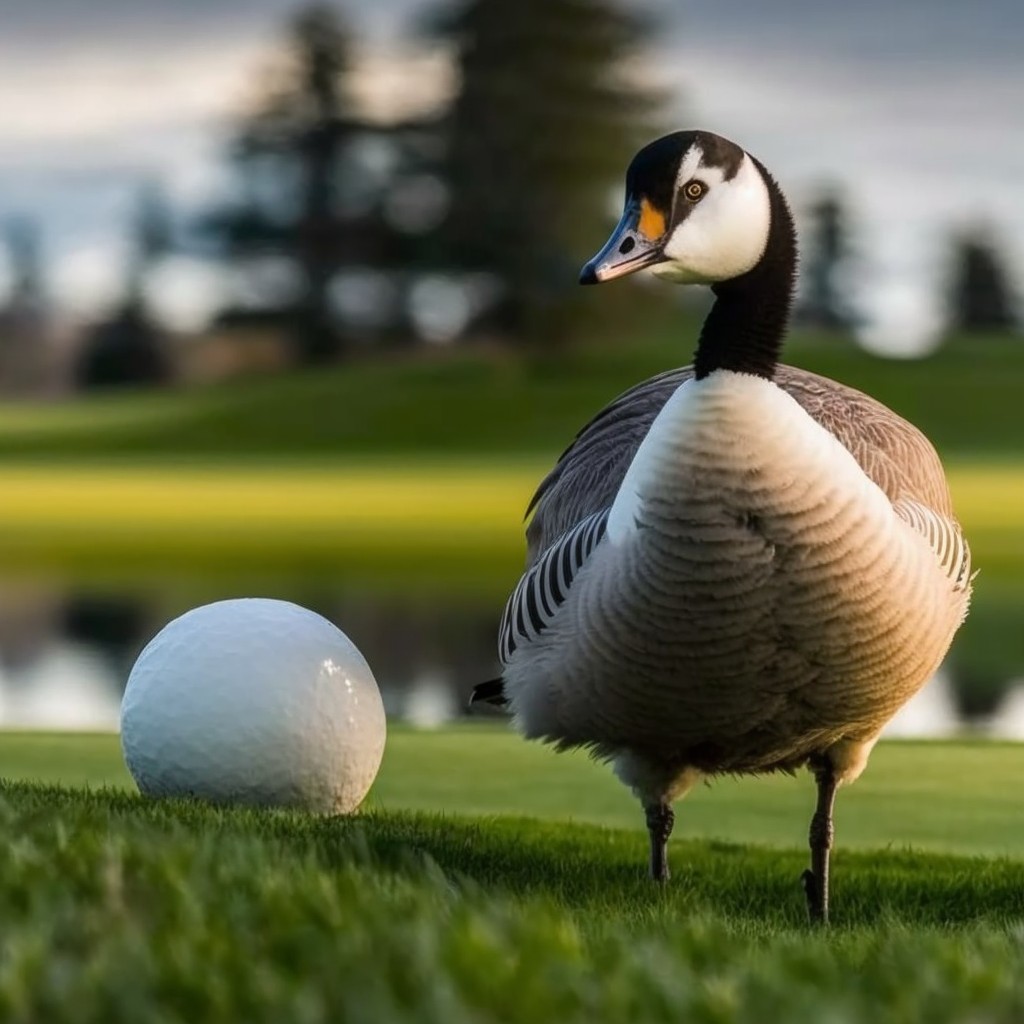
Here are some frequently asked questions (FAQs) related to golf ball distances for beginners:
1. How far should a beginner hit a golf ball?
A beginner’s golf ball distance varies greatly depending on several factors, including the club used, physical strength, swing technique, and quality of golf equipment. However, on average, a beginner might expect to hit a driver between 200 and 240 yards.
2. What factors can influence a golf ball’s distance?
Several factors can influence golf ball distance, including the golfer’s physical strength and fitness level, the quality and type of golf equipment used, and the prevailing weather conditions and terrain of the golf course.
3. How can a beginner improve their golf ball distance?
Improving golf ball distance involves mastering swing technique, choosing the right golf equipment, and developing strategies for different weather conditions and terrains. Consistent practice and patience also play a significant role in improving distance.
4. Does the type of golf ball affect the distance it can travel?
Yes, the type of golf ball can impact the distance it travels. Different golf balls are designed with varying features, including spin rate, compression, and cover material, which can all affect ball flight and distance.
5. Which golf club should a beginner use for maximum distance?
The driver is the club that can hit the ball the farthest. However, it can also be the most difficult to control. Therefore, beginners might find a 3-wood or 5-wood easier to handle initially while still providing good distance.

Here is an approximate distance range for each club type, a beginner might expect:
| Golf Club | Average Distance for Beginners (yards) |
| Driver | 200-240 |
| 3-wood | 180-220 |
| 5-wood | 170-210 |
| 2-iron | 170-210 |
| 3-iron | 160-200 |
| 4-iron | 150-190 |
| 5-iron | 140-180 |
| 6-iron | 130-170 |
| 7-iron | 120-160 |
| 8-iron | 110-150 |
| 9-iron | 95-135 |
| Pitching Wedge | 80-120 |
| Sand Wedge | 60-100 |
| Lob Wedge | 40-80 |
| Putter | Primarily for short strokes, not for distance |
Please note that these distances can vary greatly depending on numerous factors including individual skill level, strength, technique, the specific make and model of the club, the type of golf ball used, and the playing conditions. As such, these figures should be used as rough estimates and starting points, not as strict rules or goals.
We want to hear from you! Let us know your comments below.

ABOUT THE AUTHOR
Jim has been an avid golfer and golf fan for over 40 years. He started a YouTube channel called Golf Plus about a year ago and it has been wildly successful. It only made sense to expand and reach more golfers with this site and social media. You can learn more about Jim and Golf Plus Media Group by visiting our About Page.






